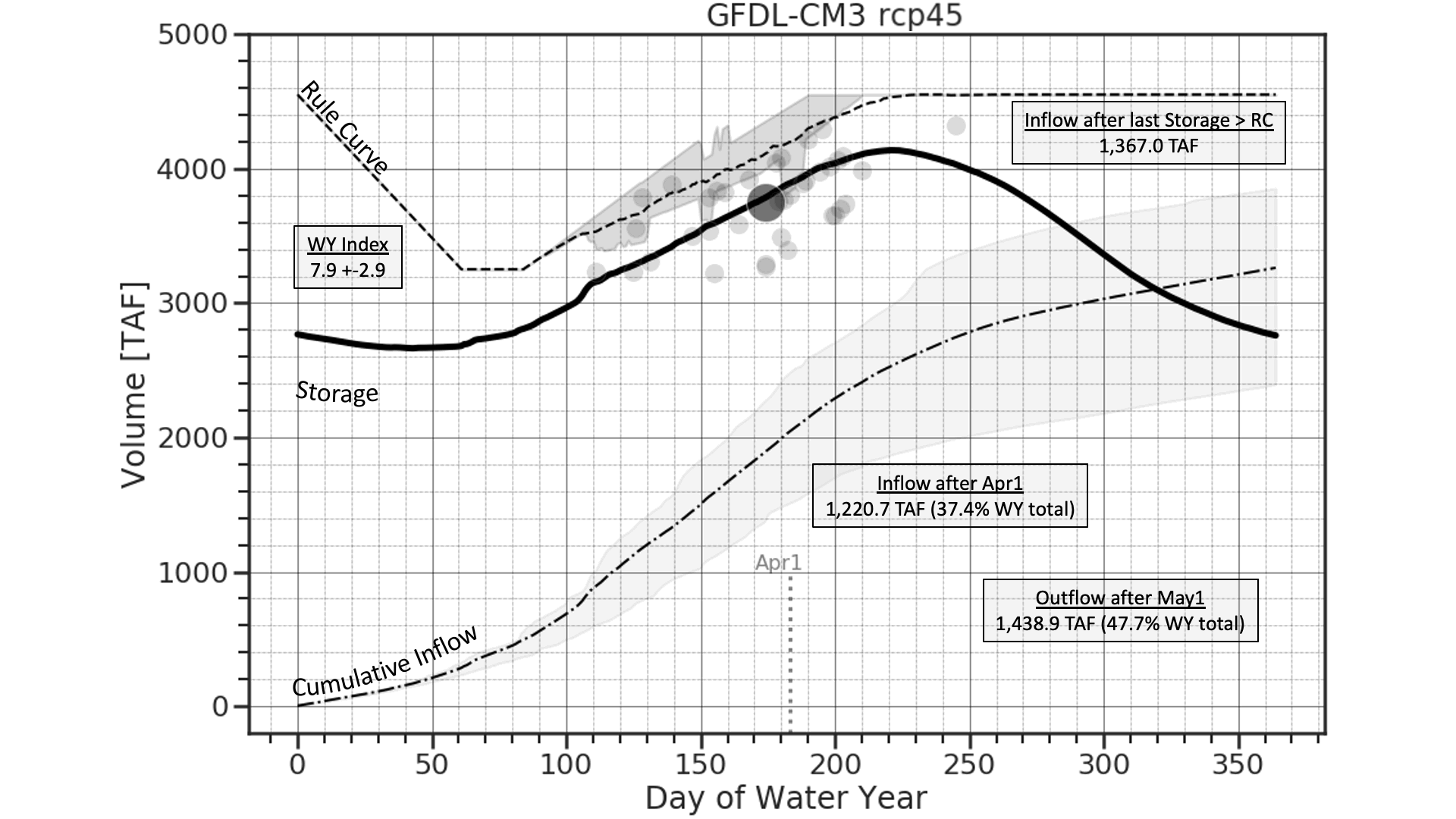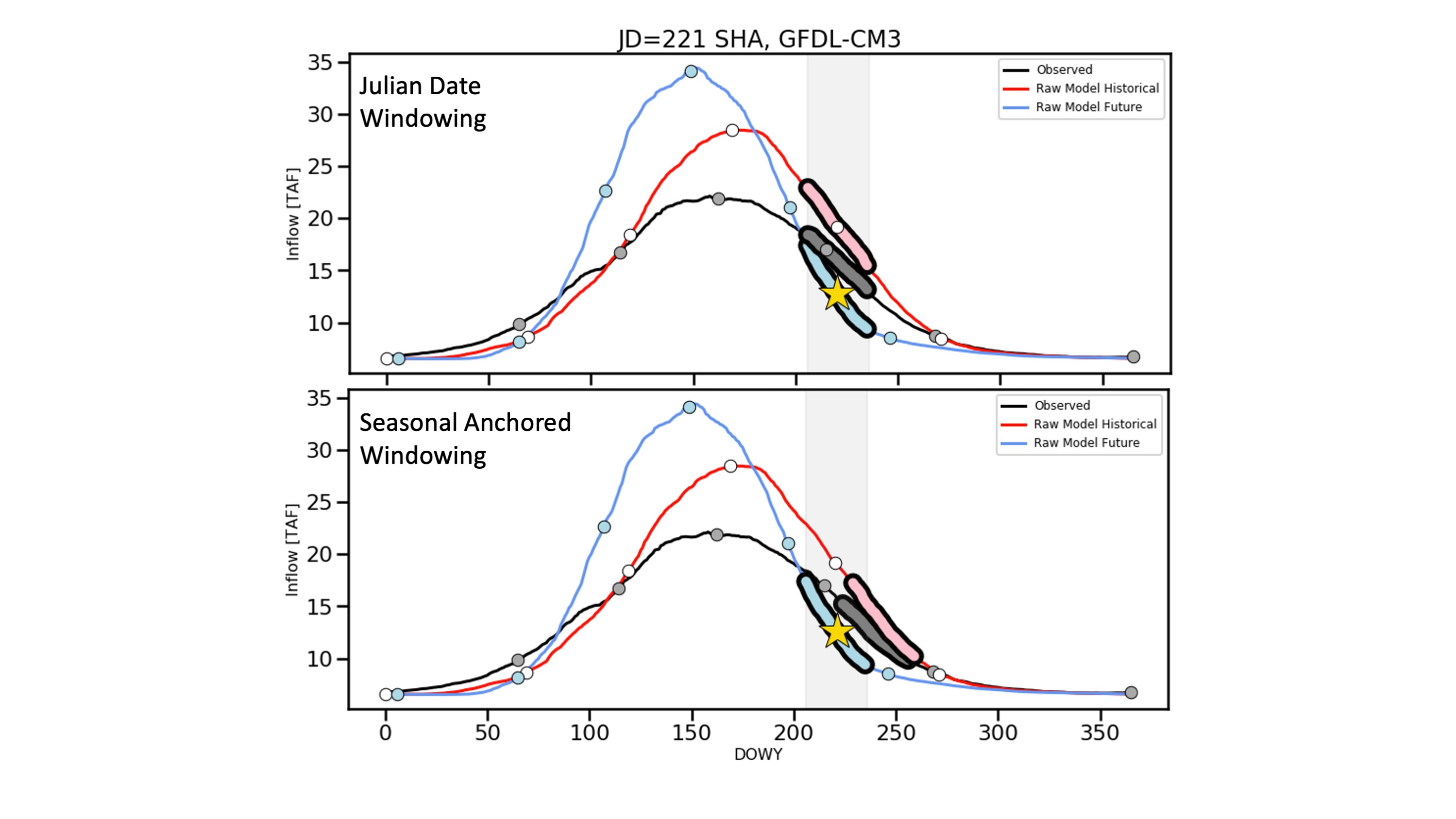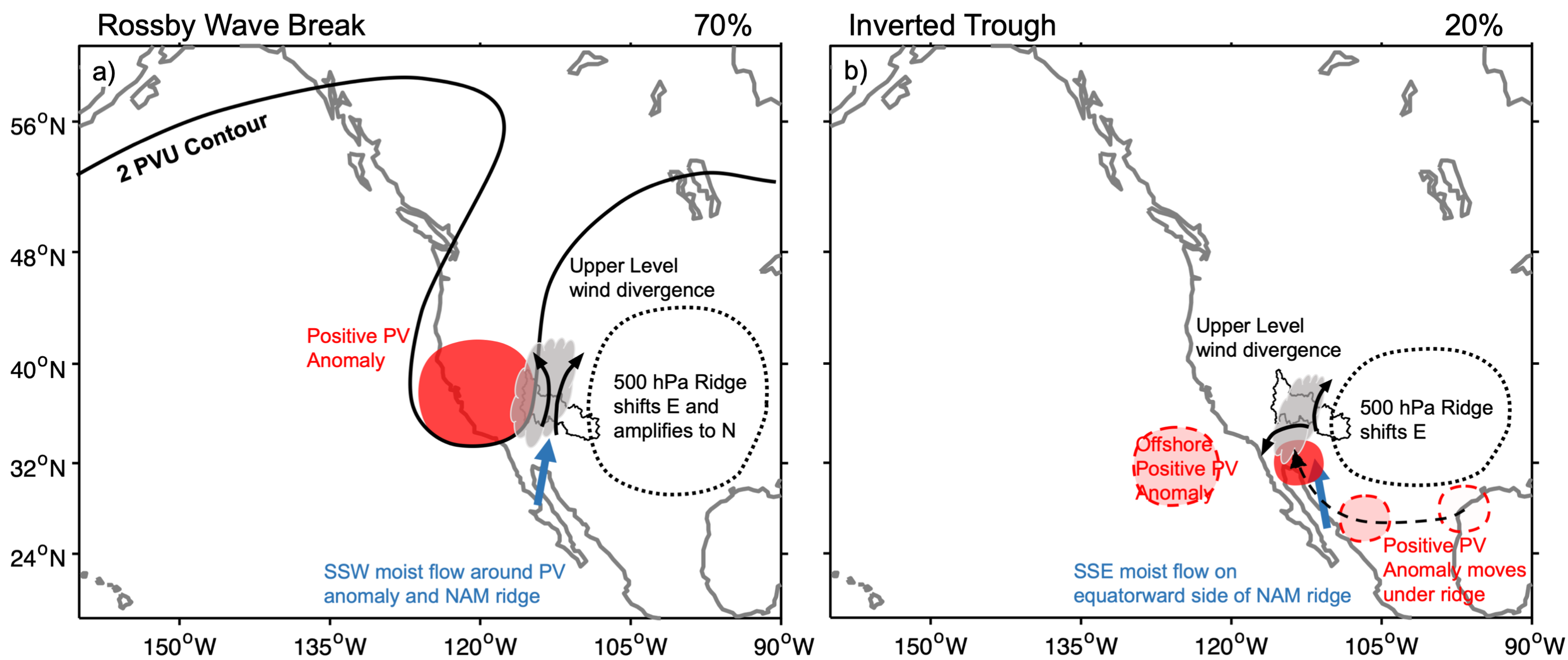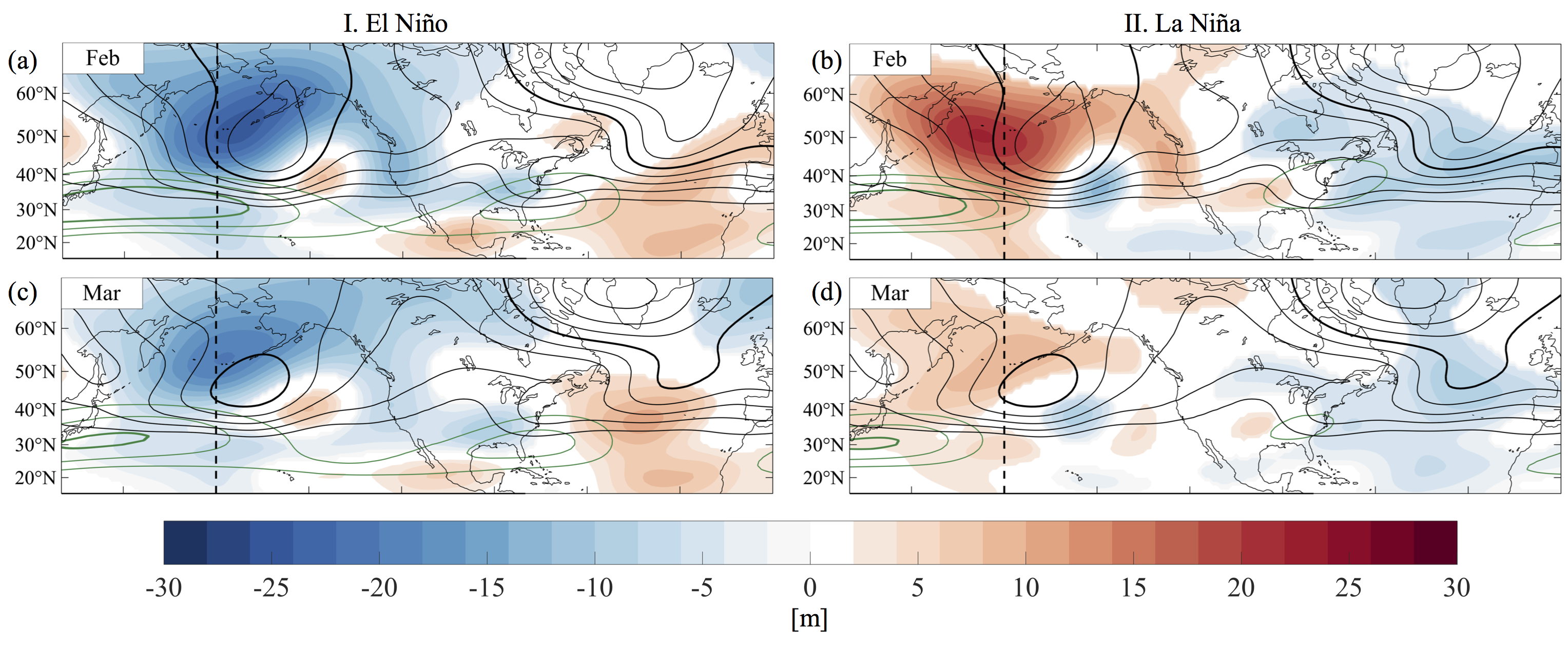Current Projects
Assessing Vulnerability and Adaptive Management Under Climate Change Scenarios: Lessons from California’s Largest Reservoir
With the arrival of increasing droughts and floods, declining snowpacks, increasing temperatures, and increasing evapotranspiration, the ways in which the West has managed water for the past 75 years increasingly appear to be insufficient in sustaining projected demand. However, individual river basins, watersheds, and reservoir drainage areas will not be impacted uniformly. As a result, the potential impacts of climate change on water management and any associated mitigation or adaptation strategies must be examined on a case-by-case basis.
The primary objective of this work is to investigate the impacts of climate change on rule-curve based reservoir operations for low-elevation historically rain-and-snow driven basins by using the Shasta reservoir in the Trinity Alps of northwestern California as a case study.

Collaborators: Mike Dettinger, Will Chapman, Marty Ralph



Seasonally Anchored Bias Correction of CMIP5 Hydrological Simulations
Raw output from climate models is often considerably biased and too coarse in spatial resolution to be used by stakeholders. There are numerous bias correction schemes designed to address these problems and create a ‘more useful’ product for decision makers. In essence, these methods establish an empirical transfer function between a given variable’s distribution in a ‘historical’ modeled and observed dataset, and applies the mapping to the model data. Typically, empirical relationships are developed using a sliding 30-day window, centered around a given julian date, thus comparing data from similar parts of an annual cycle. Although this method is widely used, it assumes a variable’s annual cycle is stationary in time. While this may hold for some applications, it certainly does not apply for something like montane streamflow, driven largely by changes in projected future snowpack.
The primary objective of this work is to develop a novel statistical post-processing scheme to improve on current streamflow bias correction methods. This technique abandons building transfer functions from data centered on a julian date, and rather uses ‘sesasonally anchored’ windows informed by a river’s climatological hydrograph.

Collaborators: Dave Pierce, Will Chapman, Marty Ralph



Selected Past Projects
Characteristics, Origins, and Impacts of Summertime Extreme Precipitation in the Lake Mead Watershed
The North American monsoon (NAM) is the main driver of summertime climate variability in the U.S. Southwest. Previous studies of the NAM have primarily focused on the Tier I region of the North American Monsoon Experiment (NAME), spanning central-western Mexico, southern Arizona, and New Mexico. This study, however, presents a climatological characterization of summertime precipitation, defined as July–September (JAS), in the Lake Mead watershed, located in the NAME Tier II region. Spatiotemporal variability of JAS rainfall is examined from 1981 to 2016 using gridded precipitation data and the meteorological mechanisms that account for this variability are investigated using reanalyses. The importance of the number of wet days (24-h rainfall ≥1 mm) and extreme rainfall events (95th percentile of wet days) to the total JAS precipitation is examined and shows extreme events playing a larger role in the west and central basin. An investigation into the dynamical drivers of extreme rainfall events indicates that anticyclonic Rossby wave breaking (RWB) in the midlatitude westerlies over the U.S. West Coast is associated with 89% of precipitation events >10 mm (98th percentile of wet days) over the Lake Mead basin. This is in contrast to the NAME Tier I region where easterly upper-level disturbances such as inverted troughs are the dominant driver of extreme precipitation. Due to the synoptic nature of RWB events, corresponding impacts and hazards extend beyond the Lake Mead watershed are relevant for the greater U.S. Southwest. Paper available here

Project Lead: Mike Sierks

Collaborators: Julie Kalansky, Forest Cannon, Marty Ralph



Monthly Modulation of ENSO Teleconnections: Implications for North American Potential Predictability
Using a high-resolution atmospheric general circulation model simulation of unprecedented ensemble size, we examine potential predictability of monthly anomalies under El Niño Southern Oscillation (ENSO) forcing and background internal variability. This study reveals the pronounced month-to-month evolution of both the ENSO forcing signal and internal variability. Internal variance in upper-level geopotential height decreases ($\sim10\%$) over the North Pacific during El Niño as the westerly jet extends eastward, allowing forced signals to account for a greater fraction of the total variability, and leading to increased potential predictability. We identify March of El Niño years as the most predictable month followed closely by February using a signal-to-noise anaylsis. In contrast, December, a month typically included in teleconnection studies, shows little-to-no potential predictability. We show that the seasonal evolution of SST forcing and variability leads to significant signal-to-noise relationships that can be directly linked to both upper-level and surface variable predictability for a given month. The stark changes in forced response, internal variability, and thus signal-to-noise across an ENSO season indicate that subseasonal fields should be used to diagnose potential predictability over North America associated with ENSO teleconnections. Using surface air temperature and precipitation as examples, this study provides motivation to pursue ‘windows of forecast opportunity’, in which statistical skill can be developed, tested, and leveraged to determine times and regions in which this skill may be elevated. Paper available here

Project Lead: Will Chapman

Collaborators: Aneesh Subramanian, Mike Sierks, Shang-Ping Xie, Marty Ralph, Youichi Kamae





Climate Adaptation Planning to Support Ecosystems and People in the Gila River Watershed, Arizona
Issues facing human populations in water-scarce regions are often complex and intertwined, reflective of the precarious nature of balancing consumptive water uses with maintaining natural ecosystems. With water-related stresses likely to be compounded by projected changes in climate, peoples of these regions are faced with the daunting task of maintaining or improving this precarious balance in increasingly unfavorable circumstances. Improving and maintaining these balances is likely to be facilitated through deliberate planning and actions, by cross-disciplinary collaborative groups and bodies.
Using the Gila and San Pedro River basins within Arizona as a case study, this report discusses the potential of climate adaptation planning to successfully address and mitigate the impacts of future climate change on ecosystems and peoples. To that end, we a) review existing literature to determine the extent to which stakeholder groups have, now or in the past, addressed or considered water and ecosystem-related problems and solutions in the context of climate change, b) identify and summarize the priorities and values of the residents and users of the river in a similar context via survey, and c) summarize future climate projections within the context of the priorities and issues revealed through steps a) and b). Final Report available here

Project Lead: Collaborative Project

Collaborators: Drew Eppehimer, Elly Fard, Lydia Jennings, John Kemper, Christina Morrisett, Josh Sturtevant, Ann Willis
